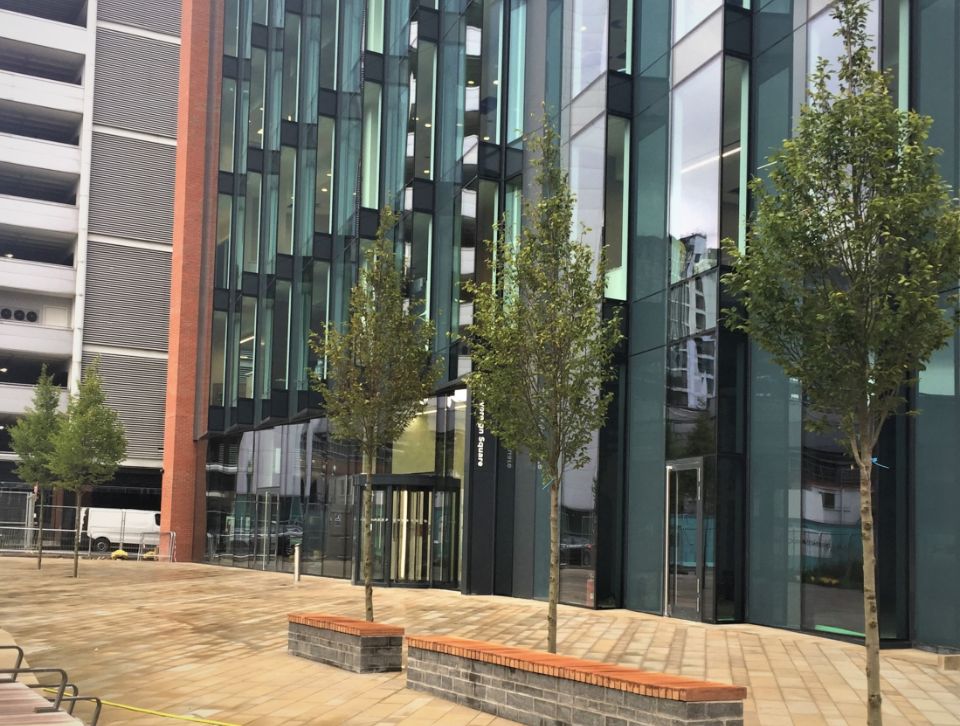“Silva Cells broaden our design creativity, allowing us to get trees into otherwise tight spaces like plaza and parking areas, yet still [allowing] the trees to really flourish.”

Officially reopened to the public in late 2021, the Palo Alto Junior Museum and Zoo underwent an ambitious $33 million renovation initiative with accessibility, interactivity, and sustainability atop the project’s priority list. In addition to expanding and modernizing the zoo, the parking lot was also upgraded with green infrastructure, including eight new trees to provide visitors with welcoming shade on hot summer days. The DeepRoot Silva Cell system was incorporated to not only assist in providing the trees with adequate soil volume for healthy root expansion, but also to treat area stormwater, which enters the system from the pervious pavement above.

Number of Silva Cells: 84 (2x)
Amount of Soil Volume Per Tree: 700 ft3
Number of Trees: 8
Type of Project: Parking Lot, Integrated, Stormwater
Project Designer: CAW Architects
Project Contractor: Vance Brown
Installation Date of Silva Cells: November 2019

Founded in 1934, the Palo Alto Junior Museum and Zoo (JMZ) was originally housed in the basement of a local elementary school. Over the decades, it grew to a 19,000-square foot community attraction with numerous classrooms and educational programs. In 2018, an organization called The Friends of the Palo Alto Junior Museum and Zoo helped secure $33 million in funding ($25 million in grants and private donations, as well as $8 million from the city) for another expansion and modernization project.
Nearly doubling in size (at 34,000 square feet), the new museum and zoo features interactive and accessible exhibits alongside over 50 species of animals. According to the City of Palo Alto, the newly improved JMZ “brings children nose-to-nose with animals, while other elements encourage imaginative play, support whole body movement, and stimulate multiple senses.”
The design team at CAW Architects also prioritized sustainability in their project plans, with particular focus on green infrastructure in the upgraded parking area. In addition to featuring EV-car charging stations and being plumbed for recycled water irrigation, the parking lot includes eight new trees offering shady respite to JMZ attendees. By utilizing the DeepRoot Silva Cell system, project planners were able to ensure mature tree growth while also assisting with at-source stormwater management.

A total of 84 (2x) Silva Cells were installed in November 2019, providing 700 cubic feet in soil volume to each of the eight new trees in the parking area. It was essential to project planners that these trees be planted in an uncompacted soil environment, giving them the best chance to grow to healthy maturity. “Silva Cells broaden our design creativity,” observed Brent McClure, principal at CAW Architects. “[This allows] us to get trees into otherwise tight spaces like plazas and parking areas, yet still [allowing] the trees to really flourish.”
Likewise, the Silva Cells assist with on-location stormwater treatment. The pervious concrete incorporated in the parking lot redesign allows rainwater to seep through the surface into the Silva Cells below — this both irrigates the trees and provides underground bioretention, cleansing the water of pollutants before it enters the municipal sewer system.
The new Palo Alto Junior Museum and Zoo, reopened in late 2021, is still a favorite attraction, providing visitors with an interactive learning experience while also providing sustainability and greenery to the local community. DeepRoot is excited to continue monitoring the progress of the parking lot trees’ thriving canopy growth in the coming years.
For other projects in the San Francisco Bay Area, check out our case studies here, here, and here.



